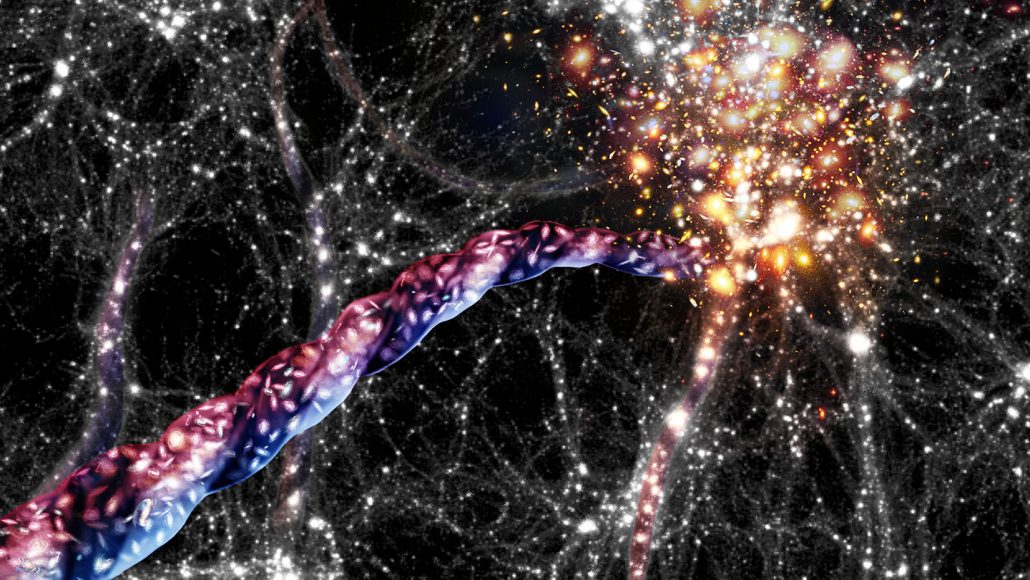HOME

Moons do it, stars do it, even whole galaxies do it. Now, two teams of scientists say cosmic filaments do it, too. These tendrils stretching hundreds of millions of light-years spin, twirling like giant corkscrews.
Cosmic filaments are the universe’s largest known structures and contain most of the universe’s mass (SN: 1/20/14). These dense, slender strands of dark matter and galaxies connect the cosmic web, channeling matter toward galaxy clusters at each strand’s end (SN: 7/5/12).
s
At the instant of the Big Bang, matter didn’t rotate; then, as stars and galaxies formed, they began to spin. Until now, galaxy clusters were the largest structures known to rotate. “Conventional thinking on the subject said that’s where spin ends. You can’t really generate torques on larger scales,” says Noam Libeskind, cosmologist at the Leibniz Institute for Astrophysics Potsdam in Germany.
So the discovery that filaments spin — at a scale that makes galaxies look like specks of dust — presents a puzzle. “We don’t have a full theory of how every galaxy comes to rotate, or every filament comes to rotate,” says Mark Neyrinck, cosmologist at University of the Basque Country in Bilbao, Spain.
News Source